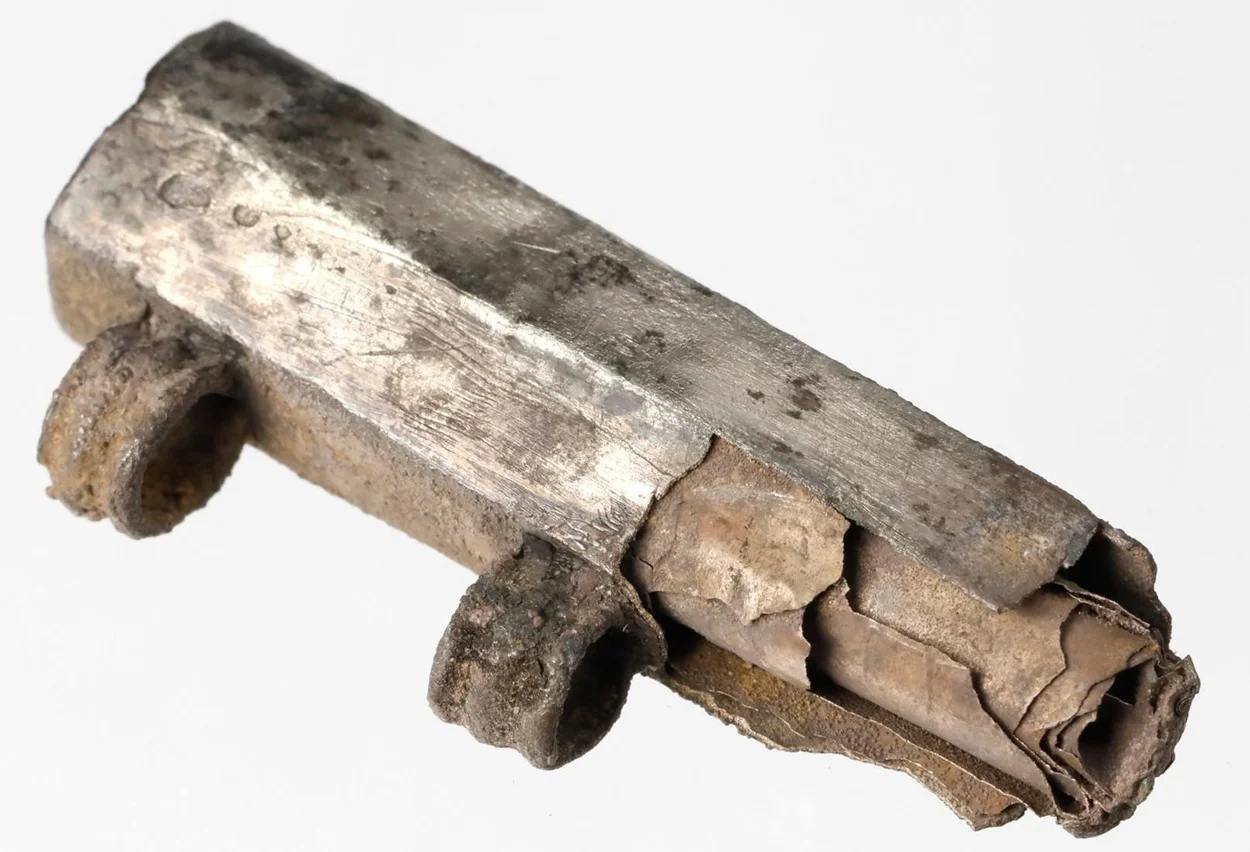Archaeologists from Goethe University Frankfurt am Main have used computer tomography to analyse an inscription on a silver foil amulet, revealing the earliest known evidence of Christianity north of the Alps.
The amulet is only 3.5 centimetres in length and contains 18 lines of text rolled up in a silver sheet. The amulet would have been worn on a string or ribbon around the neck and served as a phylactery for protection.
Amulets were particularly prevalent in ancient Roman society, being the inheritor of the ancient Greek tradition, and inextricably linked to Roman religion and magic. This inherited tradition likely influenced the silver foil amulet which was found in 2018 on the outskirts of Frankfurt in the Roman city of NIDA.
NIADA occupied the northwestern suburbs of Frankfurt am Main and was the capital of the Civitas Taunensium. According to experts, the silver foil amulet was unearthed in a grave dated to between AD 230 to 270, a period in which the city was in decline due to an invasion by the Alamanni, a confederation of Germanic tribes.
Using state-of-the-art computer tomography at the Leibniz Center for Archaeology in Mainz (LEIZA), archaeologists deciphered the text on the amulet that reads:
“(In the name?) of St. Titus. Holy, holy, holy! In the name of Jesus Christ, Son of God!
The lord of the world resists to the best of his [ability?] all seizures(?)/setbacks(?).
The god(?) grants well-being Admission.
This rescue device(?) protects the person who surrenders to the will of the Lord Jesus Christ, the Son of God, since before Jesus Christ bend all knees: the heavenly ones, the earthly and the subterranean, and every tongue confess (to Jesus Christ).”
There are historical references to the first Christian groups in Gaul and perhaps also in the province of Upper Germania in the late 2nd century AD. However, reliable evidence of Christian life in the northern Alpine regions of the Roman Empire generally only dates back to the 4th century AD.
This discovery rewrites the history of Christianity in the region and is the oldest evidence of Christianity north of the Alps, predating other finds by at least 50 years.
Frankfurt’s Lord Mayor, Mike Josef, said: The Frankfurt Inscription is a scientific sensation. Thanks to it, the history of Christianity in Frankfurt and far beyond will have to be turned back by around 50 to 100 years. The first Christian find north of the Alps comes from our city: we can be proud of this, especially now, so close to Christmas.”
Header Image Credit : Stadt Frankfurt
Sources : Goethe University Frankfurt am Main





